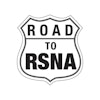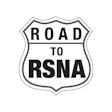Monday, November 27 | 8:10 a.m.-8:20 a.m. | M1-SSBR03-3 | Room E352
Molecular breast imaging shows its promise as a supplemental tool to further improve digital breast tomosynthesis (DBT), according to this scientific presentation.
In her presentation, Carrie Hruska, PhD, will discuss her team’s results, which show that molecular breast imaging leads to a 2.5-fold increase in invasive cancer detection and a “modest” increase in recall rate.
Hruska and colleagues wanted to study molecular breast imaging’s performance relative to DBT screening among women with dense breasts who are otherwise without symptoms. The researchers included data from 2,978 women in the Density Matters Trial between the ages of 40 and 75 years with a BI-RADS density category of C or D and with no prior supplemental screening. The women underwent molecular breast imaging over two annual screening rounds, which was performed with a dual-head cadmium zinc telluride (CZT) gamma camera and 300 MBq technetium-99m (Tc-99m) sestamibi (effective dose of 2 mSv).
The researchers found that of the 35 breast cancers diagnosed within one year of follow-up, DBT plus molecular breast imaging detected 33 (94%). This was higher compared with DBT alone (n = 13) and molecular breast imaging alone (n = 25).
The team also reported that DBT plus molecular breast imaging led to a higher cancer detection rate than both modalities alone at 11.1 per 1,000. DBT alone had a detection rate of 4.4 per 1,000 and molecular breast imaging alone had a rate of 8.4 per 1,000.
For the 23 interval cancers included in the study, molecular breast imaging alone detected 18 cancers compared to eight detected by DBT alone. Meanwhile, both modalities combined detected 22 of the total interval cancers.
The researchers highlighted that their findings point to molecular breast imaging being a suitable supplemental screening test for women with dense breasts. Find out more in this session.


